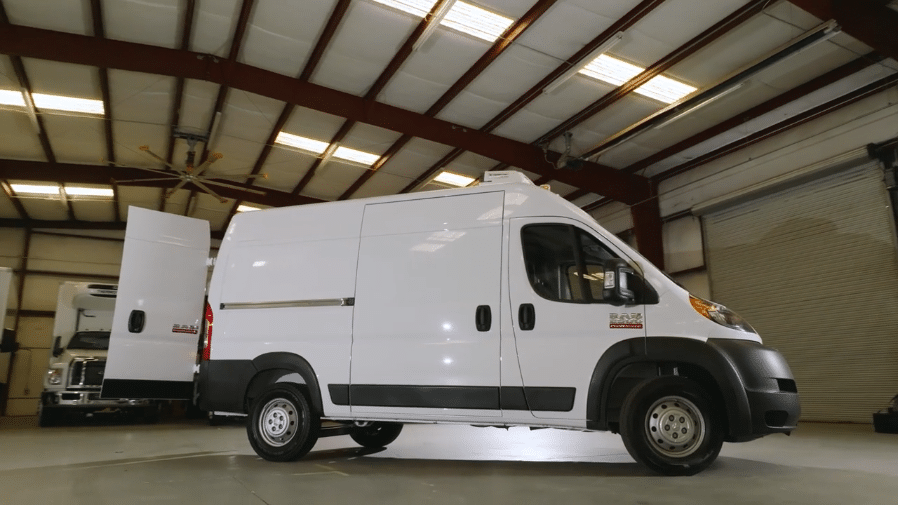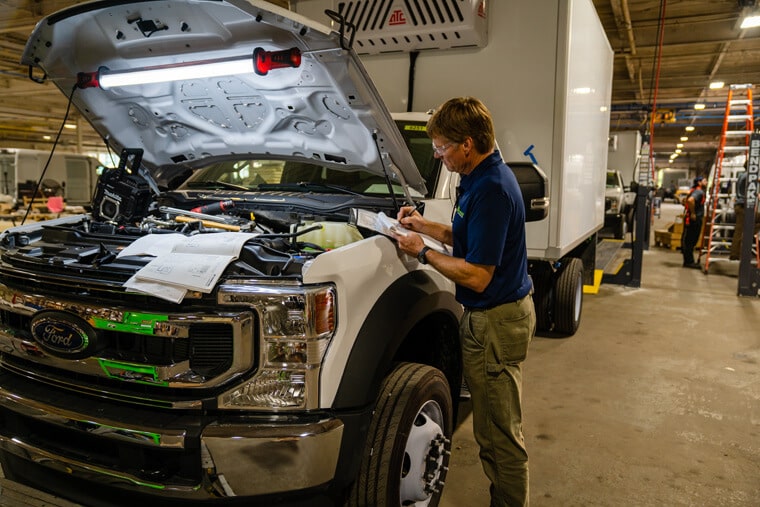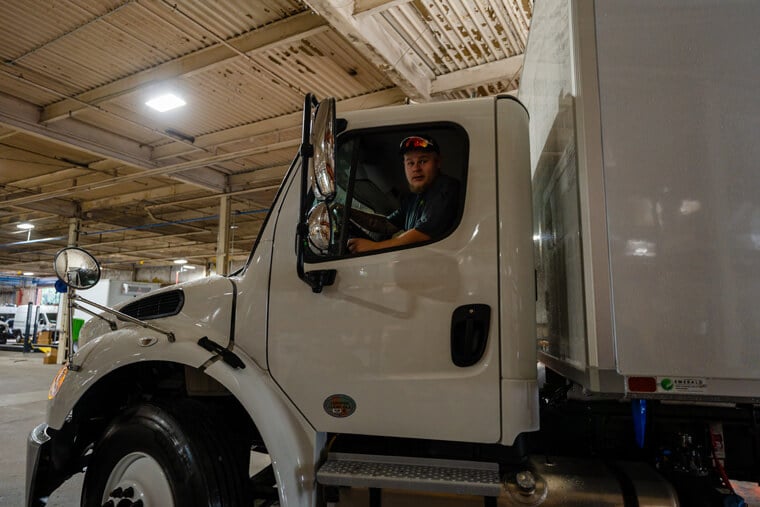
How to Customize a Refrigerated Truck or Van
Todd Cawley | September 23rd, 2025
Seafood wholesalers, florists, and a large swath of the food and beverage industry all have something in common: they depend on refrigerated vehicles to transport their products to customers.
While your company’s need for a refrigerated truck or van may be obvious, finding a refrigerated vehicle that meets all your transportation needs can be a long, complicated process. It can be difficult to find everything you want from the in-stock units at a dealership.
If you can’t find a refrigerated vehicle that fits your needs, customization ensures your fleet still meets compliance, efficiency, and product safety requirements. Whether you’re looking for refrigerated trucks or vans for sale, here’s how you can tailor your refrigerated vehicles to align perfectly with your specific business requirements.
Define the Need, Purpose, and Constraints
Like spec’ing a new vehicle (i.e., determining a vehicle’s necessary specifications), you’ll want to do the same when considering customizing a refrigerated van or truck for your fleet operations. The process can be intimidating, especially for newcomers.
There are several factors to consider, including body type, temperature requirements, and payload capacity, when determining the features and technologies that best suit your operations. Ultimately, the key to modifying your refrigerated vehicle is to let your cargo size and type guide you.
Use your cargo measurements, for example, to determine how much height, length, and width you’ll need to fit your average shipment efficiently.
Select the Right Refrigerated Vehicle
From insulated vans to full-freezer trucks, there are several types of refrigerated vehicles at your disposal. Use your established needs to guide your decisions effectively. Most fleet managers make the mistake of buying too big and wasting space, rather than purchasing a smaller vehicle that can fit everything adequately.
Buying a smaller truck or van costs less and is more fuel-efficient due to its reduced weight, which saves you money and emits less exhaust into the environment. The body’s material also plays into how light it is.
For example, at Emerald Transportation Solutions, we partner with PolyVan, a supplier of super-light anodized aluminum van bodies with a gross vehicle weight rating (GVWR) as low as 3.9 tons. The gas savings and environmental benefits are clear, but these lighter bodies also reduce wear on the chassis — contributing to a longer lifespan for your truck.
And speaking of chassis, another big mistake fleet managers make is pulling the trigger on one before knowing what kind of body they need. Do you need a box truck body or a multi-temp reefer body? With this question answered, use the vehicle body specs to inform your chassis decision.
First, ensure its GVWR accommodates your heaviest loads plus the body’s weight. Furthermore, the length must be sufficient to support the body properly. When considering tires, make sure your selection doesn’t unnecessarily raise the loading platform.
Scope Out Must-Have Components and Features
Several components on the market can be leveraged to make your fleet operations smoother and more efficient. Here are the ones you’ll want to keep top of mind.
Refrigeration Unit
The bread and butter of a refrigerated vehicle is, you guessed it, the refrigeration unit on board. This is another instance where knowing your product is important. The temperature threshold that it must stay at dictates the cooling power of the system you buy. When considering the refrigeration unit, you’ll need to decide between a nose-mounted or roof-mounted unit.
A nose-mounted unit can be found on the exterior of the cargo box, located behind the cab of a refrigerated truck or trailer. As a result, they tend to be more powerful than roof-mounted units and are best suited for hauling cargo over long distances. They also provide stronger airflow and easier access for service.
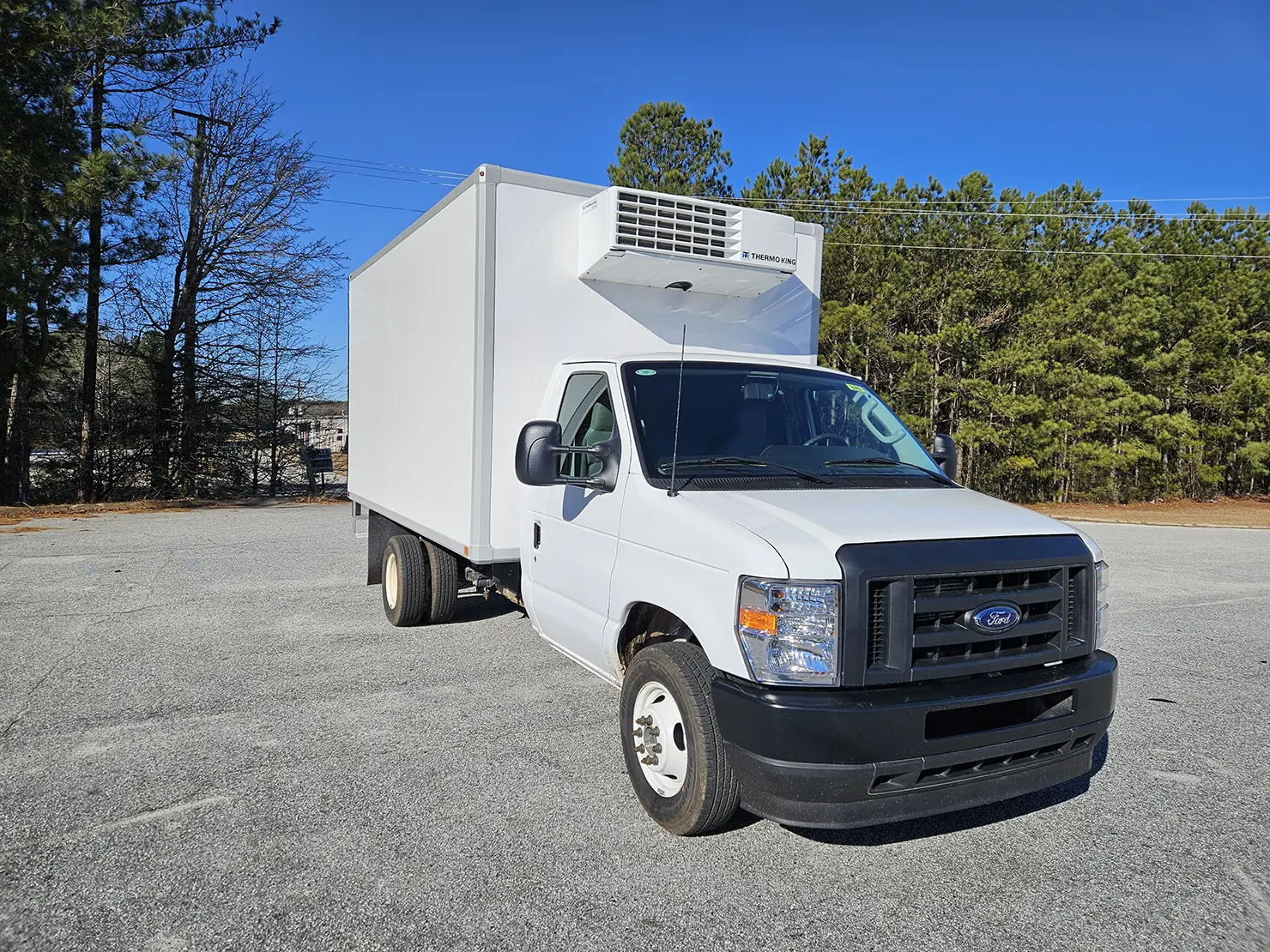
A white Emerald refrigerated box truck with a nose-mounted refrigeration unit.
In comparison, as its name implies, a roof-mounted unit is typically found on the top of the vehicle’s roof and is most common among cargo vans and small trucks. Roof-mounted units are designed to be aerodynamic, reducing drag which improves fuel efficiency.
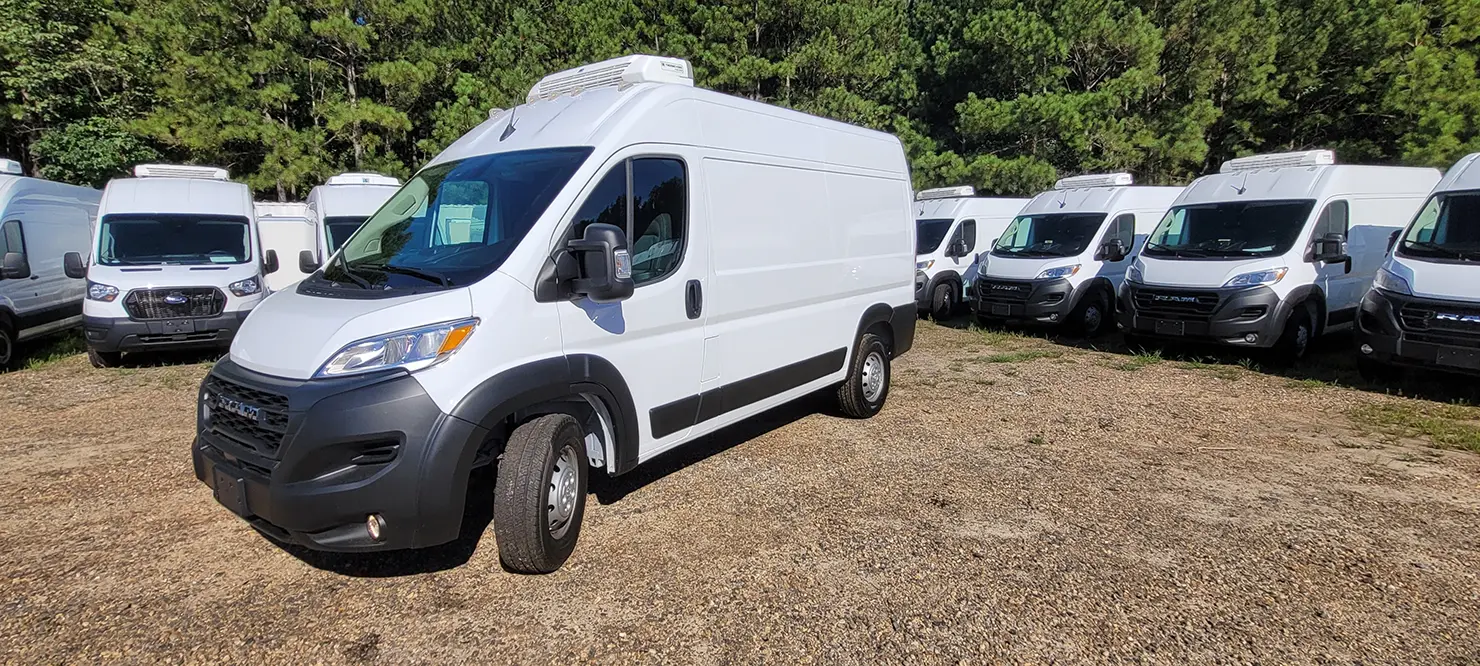
A white Emerald refrigerated van with a roof-mounted refrigeration unit.
Another aspect to consider is electric-only and hybrid refrigeration systems. For decades, trucks have relied on engine-powered refrigeration systems. They’re still prominent, but electric-only and hybrid offer additional benefits you may want to explore.
For example, electric-only systems decouple refrigeration from a running engine, allowing operations during stops. Additionally, electric-powered compressors are lighter and more efficient, aligning well with current regulations. Meanwhile, hybrid units offer the flexibility to operate in diesel, electric, or dual-mode settings.
Insulation
Proper insulation is one of the most critical aspects of customizing a refrigerated vehicle. High-density foam insulation is often used to maintain the desired internal temperature by preventing external heat from entering and internal cold from leaving. This ensures that your goods remain at the optimal temperature throughout transit.
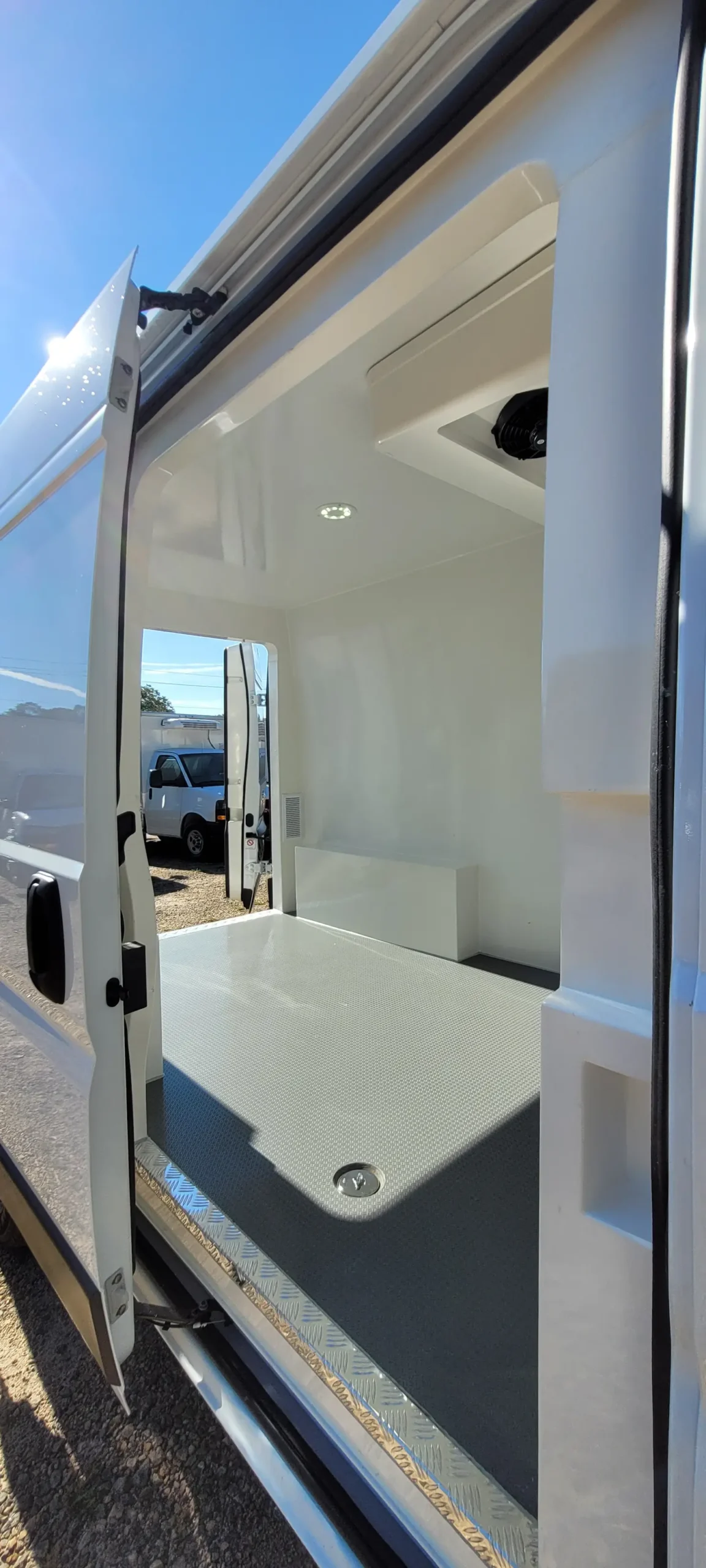
The insulated interior of an Emerald refrigerated van helps maintain consistent temperatures and product safety.
Sometimes, when fleet managers hear they can save money and fit everything in by cutting back on a couple of inches of insulation, they may do so. While this provides upfront savings, you risk a likely loss in the long run as container temperatures vary, and refrigeration costs increase. Don’t skimp here.
One key factor that should be central to your decision-making is the region in which your drivers will operate. The U.S. is an expansive country with diverse climates. While most areas require a baseline layer of insulation, hot southern states demand thicker applications, perhaps made from a costlier material that will pay off in the long run.
Door Type
Next up is the door type. There are two key options here: roll-up and swing doors. Roll-up doors are easier to use and ideal for tight unloading conditions. They take less time to open and stow away, providing quick access to products. However, what you gain in quickness, you lose in space and insulation.
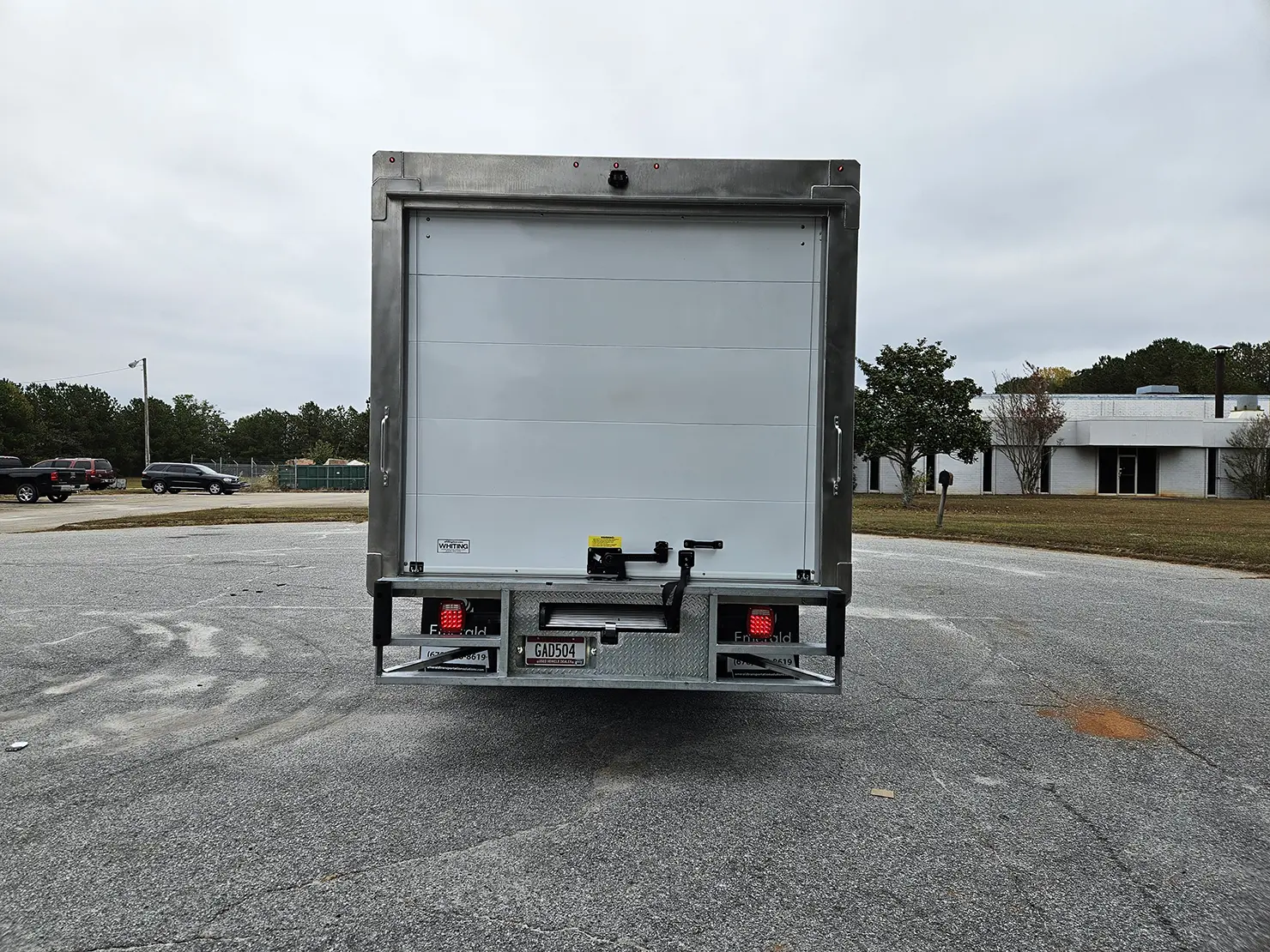
An Emerald refrigerated truck with a roll-up door for quick and efficient cargo access.
Roll-up doors move above your load, meaning you can’t take full advantage of the container’s space. They also aren’t as airtight as a swing door, and they leak refrigerated air, allowing heat and humidity to enter. On the other hand, swing doors are a bit more cumbersome to use.
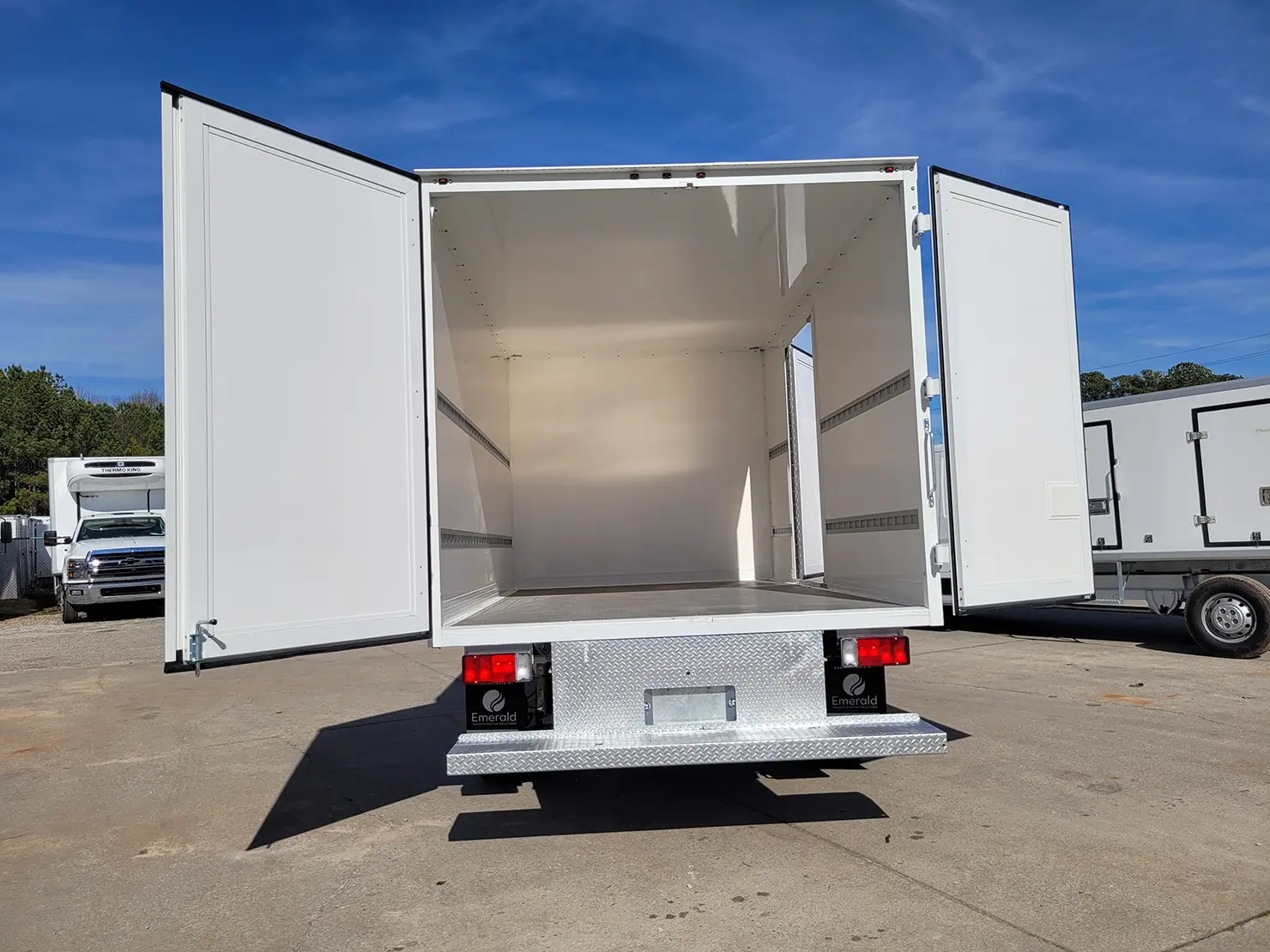
An Emerald refrigerated truck with swing doors that provide wide, unobstructed entry to the cargo area.
Swing doors must open out and remain open, restricting access from one side. If you want a rail gate, swing doors make those near impossible to use. That said, they seal and insulate your product well, providing more space than roll-up doors.
Stowing and Loading
The biggest danger to your product is the loading and unloading process. Workers must maneuver thousands of pounds of varying items without causing damage. To support them, there are several options to choose from, such as walk-up ramps, liftgates, and forklift reinforcement.
Let’s walk through each option and what they’re best suited for, starting with walk-up ramps. Walk-up ramps pull out from the bottom of a truck’s body. They’re utilitarian for loading and unloading by hand, making room for dollies that allow workers to quickly unload items and transport them to another location.
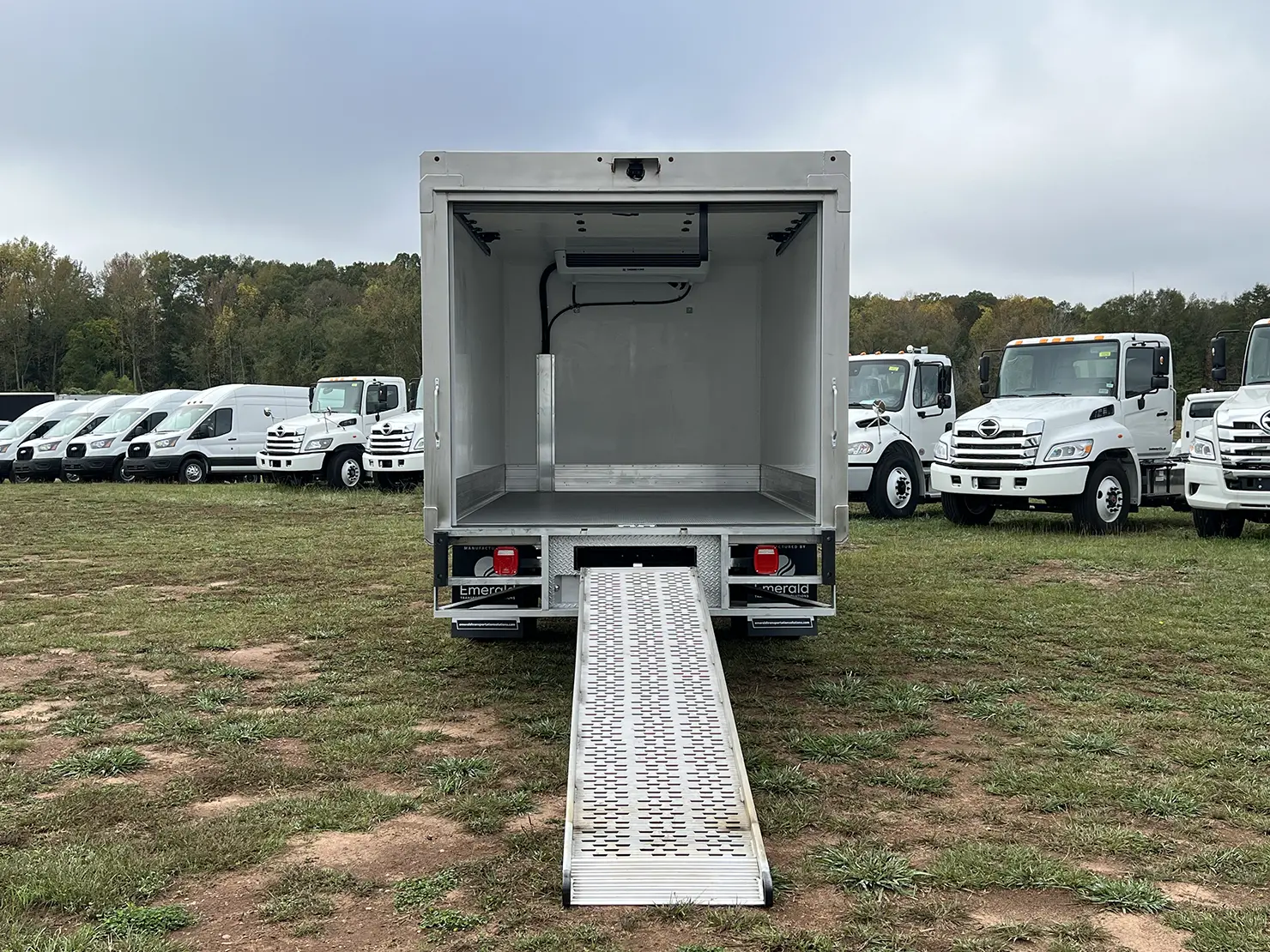
An Emerald refrigerated truck equipped with a walk-up ramp for safe and efficient cargo handling.
For heavier packages, you may need a liftgate to load and unload products from the container. A tuckaway gate has the benefit of being out of sight (under the truck) when stowed. For a more substantial platform, though, you’ll need a rail gate. This option carries more weight and has a broader base. Since it sits on the back of the truck, it can be an occasional obstacle.
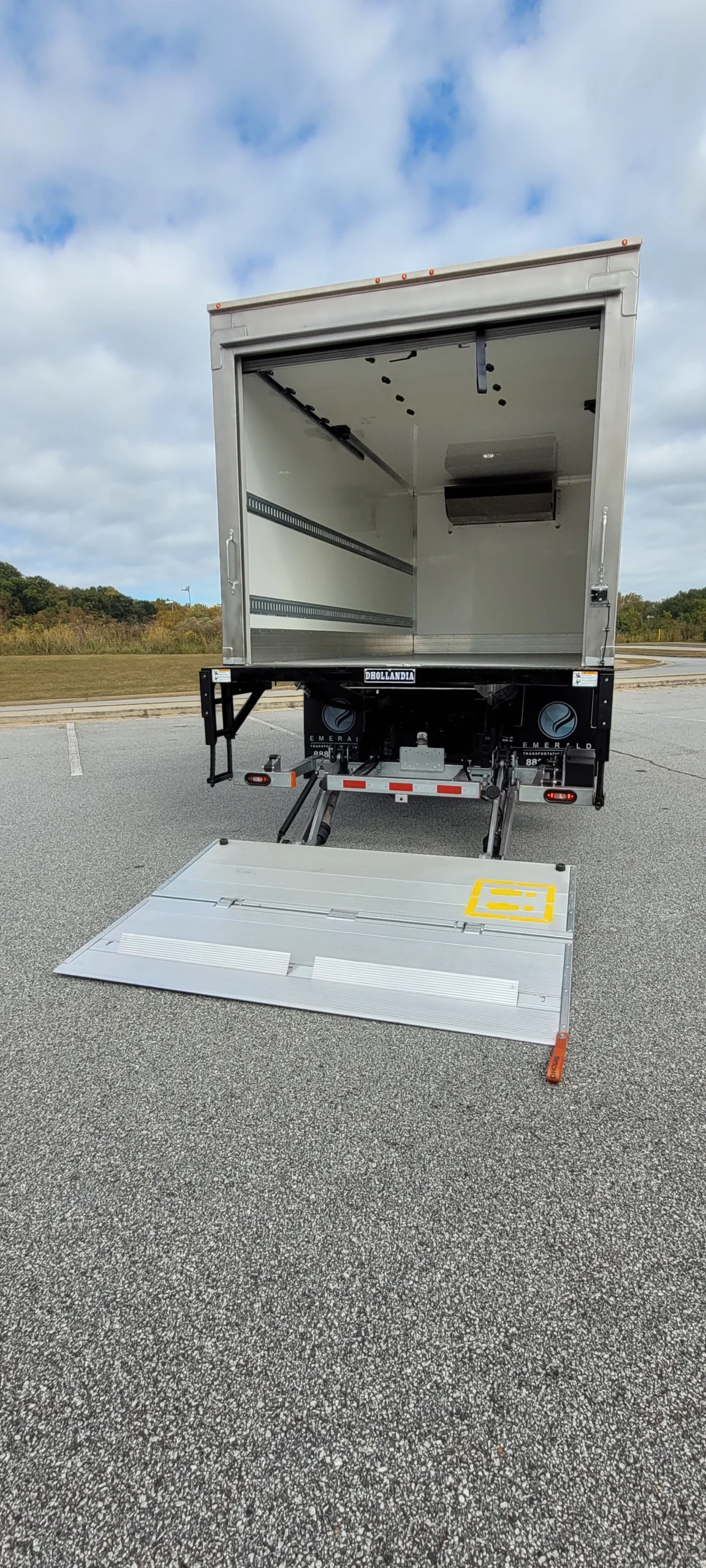
An Emerald refrigerated truck with a liftgate for safe and efficient handling of heavy loads.
The heaviest shipments usually need a forklift. If that is the case, you must prepare your body’s floor with reinforced rear-end plates and other strengthening measures. Only then can it withstand repeated forklift loading.
Bumpers
An often overlooked but essential part of customizing your refrigerated vehicle is your choice of bumpers. They impact safety, compliance, and the day-to-day efficiency and safety of your drivers. Depending on your preference, it can also affect the lifespan of your vehicle. We’ll discuss four options.
A full-width galvanized drop step bumper is an optional feature for those with delivery routes that include frequent stops. Since this bumper spans the width of the vehicle and features a built-in step drop below the frame level, it makes it easier for drivers and loaders to climb in and out of the cargo area. Likewise, the galvanized finish is corrosion-resistant, extending its lifespan.
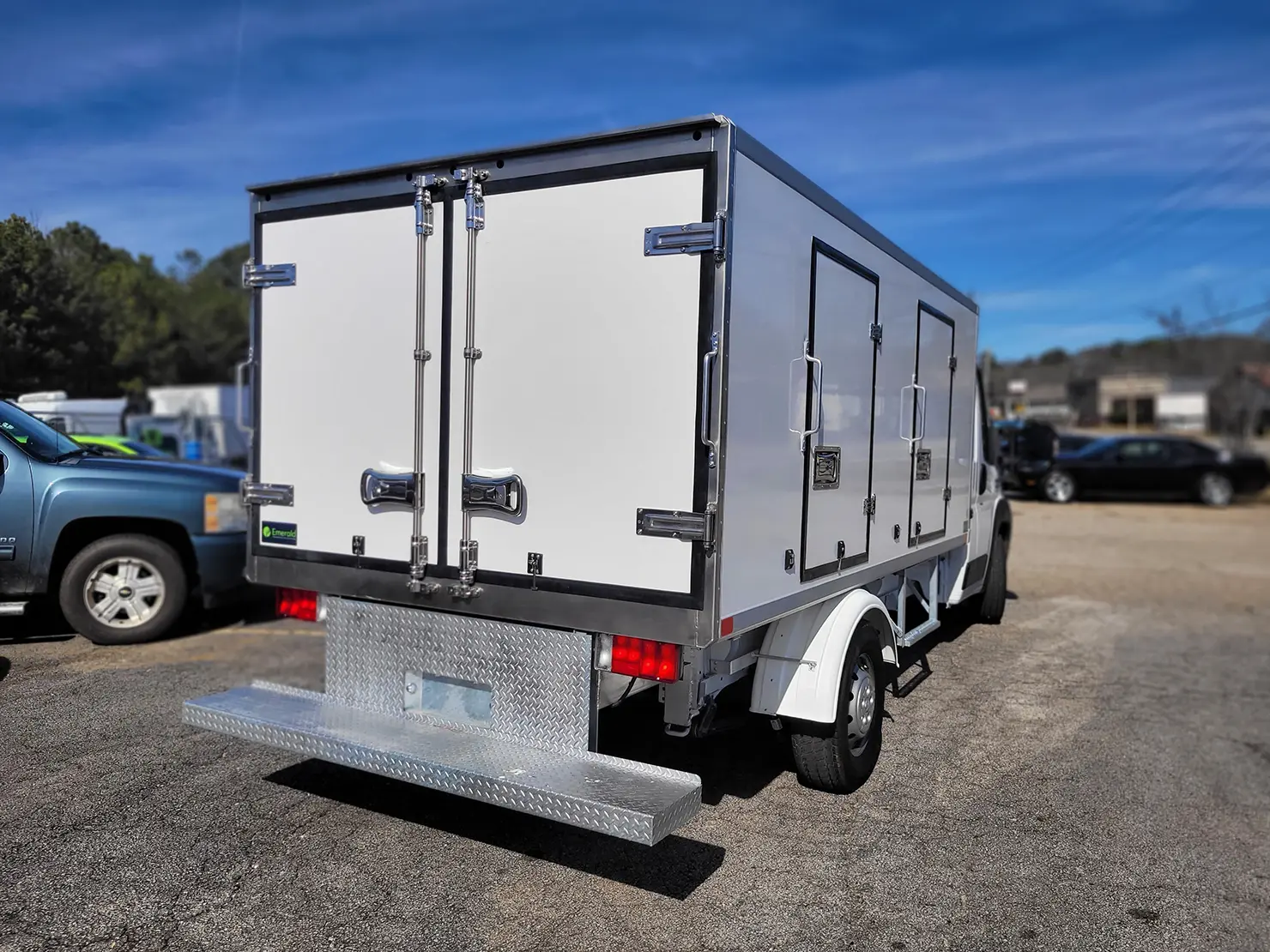
An Emerald refrigerated truck with a full-width galvanized drop step bumper for safer and more convenient entry.
Another option is a full-width ICC (Interstate Commerce Commission) bumper. The U.S. Department of Transportation requires this type of bumper for most commercial vehicles. You can add-on dock pads to absorb the impact of backing into loading docks, protecting your vehicle’s frame and body. These types of bumpers are typically best for fleets that load/unload at distribution centers or warehouses.
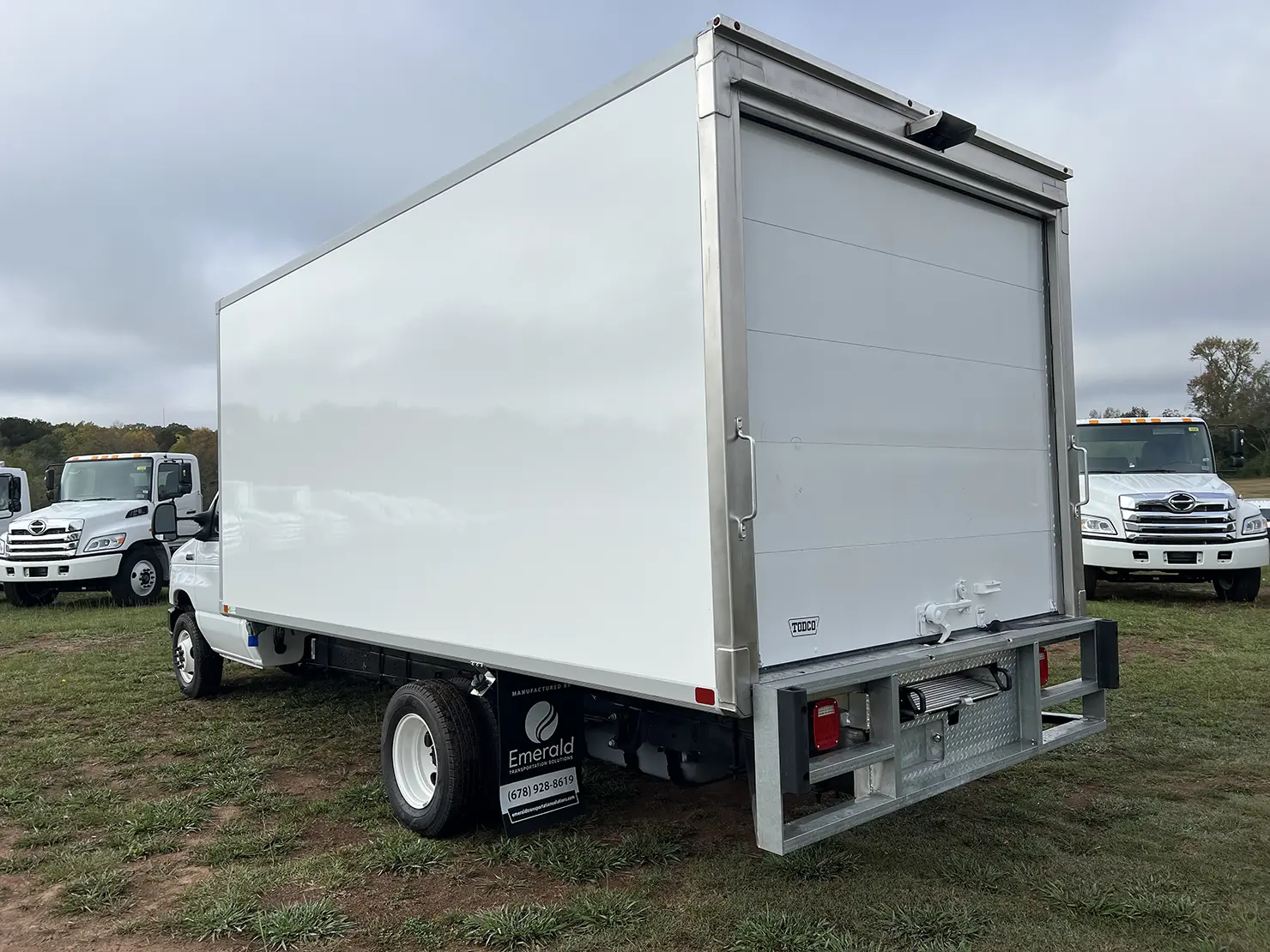
An Emerald refrigerated truck with an ICC bumper designed for enhanced safety and regulatory compliance.
Then there’s the galvanized Chicago-style bumper. It’s a heavy-duty bumper that features a protruding step/platform design. This design element provides a larger and more stable standing area for drivers, making it ideal for fleets where employees spend a significant amount of time at the back of the truck.
Finally, there’s what we call a vendor safety bumper, a reinforced bumper with integrated steps. The design of this bumper is intended to provide multiple footholds, improving accessibility and reducing slip/fall risks. If you’re concerned about driver safety and injury prevention, this is one way to go.
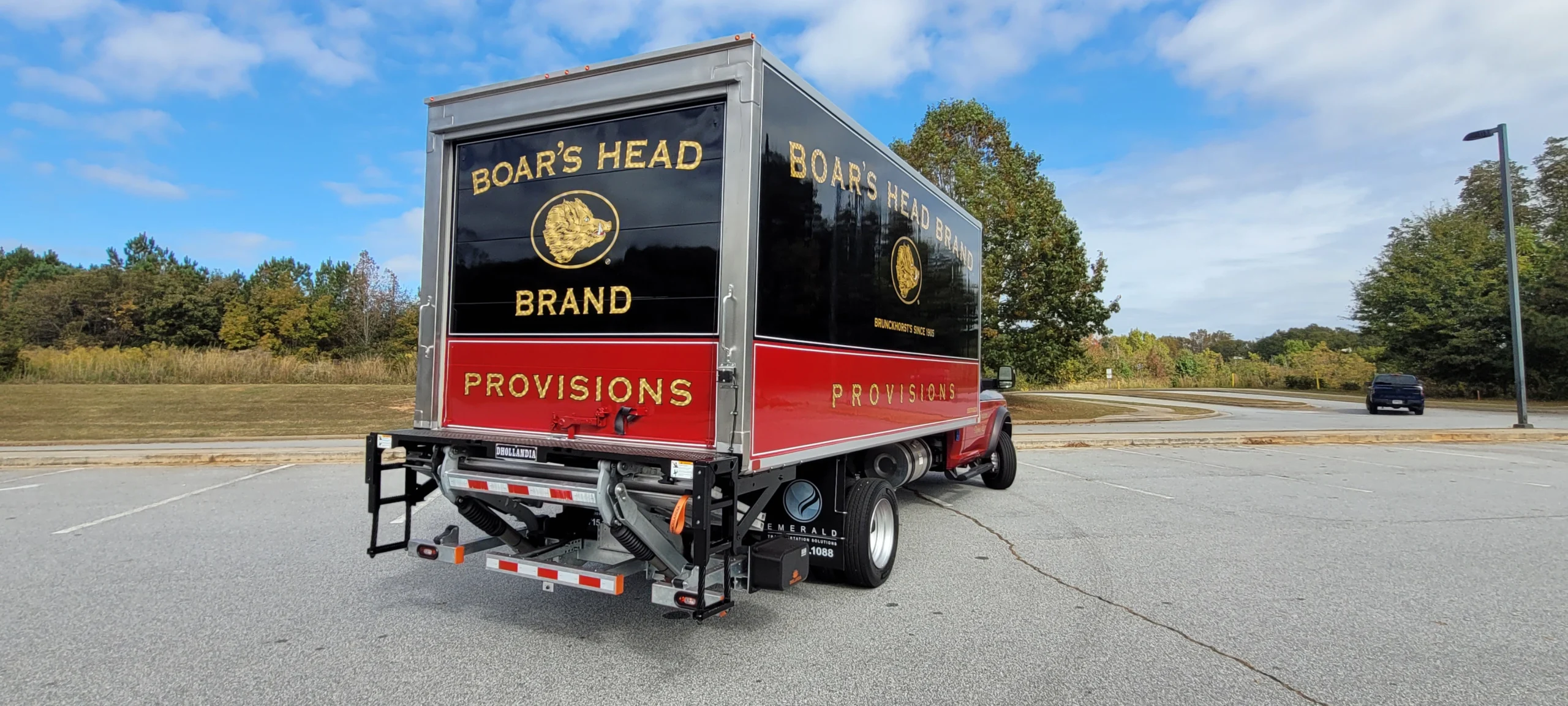
A refrigerated truck with a vendor safety bumper, reinforced for protection and equipped with integrated steps for easy access.
Interior Cargo Handling
Customizing the interior of your refrigerated van or truck can maximize payload and improve organization. Adjustable shelving systems are a practical solution, enabling you to arrange your cargo and use the available space efficiently.
Dual cargo temperature controls offer the flexibility to maintain different temperature zones within the same vehicle, which is essential for businesses transporting items that require varying storage conditions. Likewise, consider bulkheads, strip curtains, and cooling compartments.
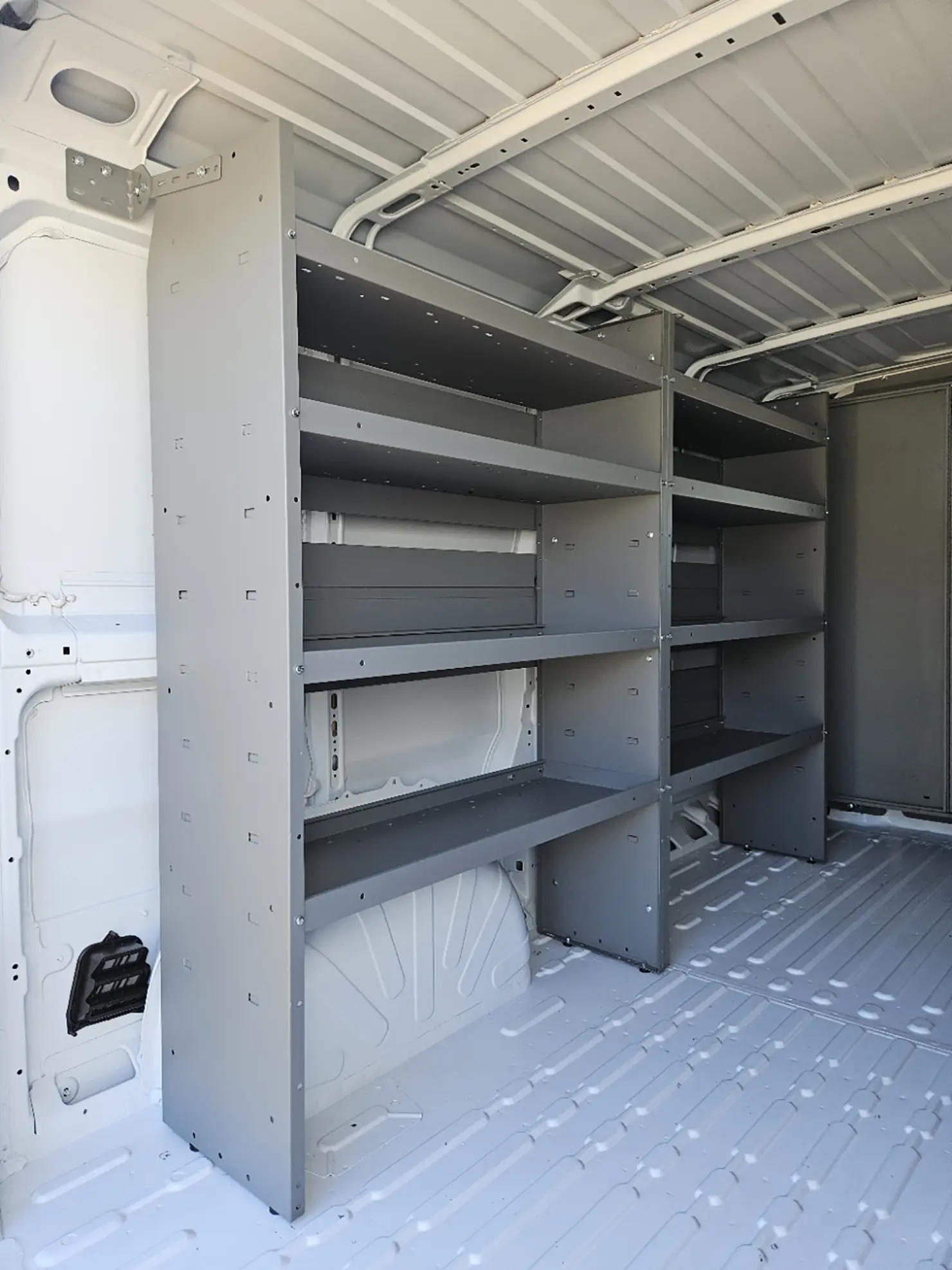
Interior of customized Emerald refrigerated van.
Consider Technology Add-Ons
Incorporating technology into your refrigerated vehicle can significantly enhance efficiency and reduce costs. Wireless tracking systems, for example, monitor vehicle speed, idle time, fuel economy, and overall fuel costs, providing valuable data to manage and optimize your fleet effectively.
Digital temperature control display systems in the cargo area and cab are also beneficial. They allow drivers to monitor and track temperatures in real time, ensuring that any deviations are quickly addressed. Advanced temperature controls, for example, can be set to maintain different temperature zones within the same vehicle, which is vital for transporting diverse products such as dairy items and frozen goods.
Additionally, pre-kitting capabilities streamline routes and manage inventory more effectively, reducing the need for multiple trips and improving fuel efficiency.
Getting Started: Customizing Your Vehicle
Customization is a great option for getting exactly what you need. But going down this route is not without its challenges. Typically, the process of customizing a refrigerated van or truck can take months. Just working with a chassis dealer can take a week or more before waiting an additional 6-8 weeks for the results.
And once you’ve defined what you’re looking for, it can take about four weeks for the body to be built, two more weeks for custom-fitting, and at least another two weeks for delivery, in addition to a week or so for dealer servicing. This is only if there are no delays or other issues that arise.
Reading through this vehicle modification process may have worn you out or caused some stress.
One way to circumvent this issue and expedite the process of getting your custom vehicle is to partner with a company with proven experience in customizing refrigerated vans or trucks. At Emerald Transportation Solutions, we have more than 20 years of industry experience doing just that.
Refrigerated Vehicle Customization the Emerald Way
Over the past two decades, we’ve learned a thing or two about refrigerated truck and van modifications, which have enabled us to provide customers with a customized vehicle from start to finish in under four weeks. We accomplish this by defining all of specs to ensure we get the right solution.
Our process is up to 80% faster because we provide all the services you need under one roof. We eliminate the hassle of coordinating with multiple vendors, covering vehicle procurement, customization, tax/title/tag services, and financing.
We also understand the importance of having a refrigerated vehicle for your fleet operations, so we aim to make the process as seamless as possible. Rather than viewing technical specs and documents, you can choose from three size options and four temperature control levels.
And after you’ve selected your unit and modifications, we conduct an extensive certification process to ensure that each component of your vehicle meets and exceeds all applicable operational requirements. We make sure your customized equipment complies with the U.S. Department of Agriculture’s Agreement on the International Carriage of Perishable Goods (ATP).
The reason for the Emerald Way is simple. You shouldn’t have to put your business on hold while you wait for customized refrigerated trucks and vans. Our approach gets you out on the road in no time flat. Want more details? Reach out to our industry-leading experts to learn more, whether you’re customizing units, buying ready-made vehicles from our vast inventory, or need repairs on units you’ve previously purchased from us.
Editor’s Note: This blog was originally published in July 2024 and has been updated for comprehensiveness in September 2025.
Related Articles
Contact Us
Feel Free To Contact Us If You Have Any Questions
What does under DOT mean?
Questions regarding DOT requirements come up often. 10,000 lbs GVW (gross vehicle weight) and over are commercial vehicles that fall under the Department of Transportation regulatory requirements.
What is the difference between GVW and payload?
GVW or Gross Vehicle Weight is the entire weight of the vehicle including the payload. The payload weight represents the amount of cargo you are hauling.
What is a self-powered unit and a vehicle-powered unit?
A self-powered unit has its own fuel source and will run independent of the truck. This is the heaviest and most expensive option. While vehicle-powered units run off the engine via a compressor mounted on the engine. These are less expensive and lighter in weight but you must run the truck or plug the electric standby into shore power.
What does K-factor mean and why is that important?
K-factor is a term that stands for the overall insulating value of the container (truck body). Quite simply the lower the K-factor the better the truck body will be able to maintain a given temperature and require less energy to do so.
How much lighter is a Poly Van vs a US spec body?
Poly Van bodies are very light. On average we estimate we are 75-150 lbs per foot lighter than a traditional sheet and post foamed in place body. These weight savings translates to less fuel burn and less CO2 emissions, along with added payload, the most important benefit.


